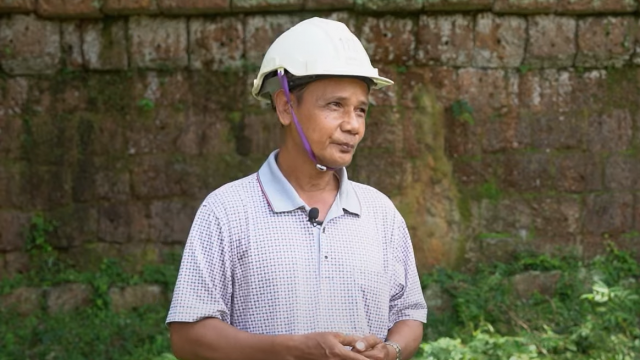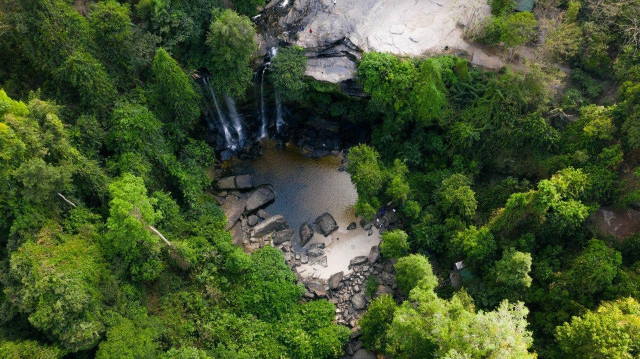Simple Tools and Patience Keep the Old City Clean

- By Choeun Sreynoy
- December 4, 2022 8:38 PM
SIEM REAP - When visiting the Angkor Wat or other temples in the Angkor Archaeological Park, visitors rarely see messy tree branches on walls or walkways overgrown with grass.
This good order has not come without human intervention. Every day, these aging structures must be kept tidy.
With 401 square kilometres of strictly protected land, the complexity of this ancient city requires a tremendous amount of work to keep it in shape.
Ngin Thy has worked with the Apsara National Authority as a team leader responsible for clearing plants and mosses at the lower sections of the temples since 1994.
In 2014, he got the job of managing a team ensuring that both the lower and the higher sections of the temples are free from intrusive plants.
Thy can remember that in 1999 Angkor Wat was covered in thick trees such as kumpneang and sangke. The moat was filled with water plants like a thick layer of sponge. You could even stand on it.
Thy’s team had to cut it into pieces and remove them on tractors, a process that took almost a year. The water plants tourists can see now are newly sprouted.
“The process of cleaning the plants from the lower parts of the temple has not changed. For the upper parts, I have created some special tools with hooks so that the caretakers can remove the plants much more easily”, said Thy as he stood in front of a temple’s wall while other caretakers were brushing off the small plants.
It is relatively easier to clean brick temples such as Mebon or Pre Rub. However, for the Angkor Wat and Bayon temples, which are made mostly from laterite stones, it can be time-consuming, considering the safety of the workers and the whole structures.
Workers cannot easily use ropes as they wish. Moving ladders around the structure means more stones can fall.
Although not the safest option, these temple caretakers have decided to use simple ladders to climb up high elevations of the temples. They also have thought of using scaffolding. However, this takes too long to install and too much expense to transport and store.
_1670161647.png)
Also, installing scaffolding all around the temple just to clean the plants would disturb the experience of visitors and official delegations.
In this case, why is mechanised equipment not used sometimes to clean the temples?
“Machinery can only be used at the bottom of the temples, and not the upper parts. If we use heavy equipment, it can damage the stones”, Thy said. “Caretakers must also be patient and with a light touch when it comes to using simple equipment to brush off the plants.”
Seeing his father working as a concrete moulder in Angkor Conservation since the time of the French protectorate, Thy also followed this father's footstep and worked in this institution since his youth before the Khmer Rouge regime took over the country.
Afterward, he was recruited back into the workforce. He was also responsible in producing moulds such as that of the Yaksa pulling Naga.
_1670161729.png)
When asked if he feels tired on the job he does, Thy simply replied that he feels happy.
“I did not learn much because of the war. I only reached grade 7 during the Lon Nol regime. Then came the Khmer Rouge time. After it had ended, I became an orphan and went directly to work,” he said.
“I tried to learn and work by myself. I worked at the Angkor Conservation during the daytime to earn some money. At night, I armed myself and protected a post. There was no free time.”
Sometimes, even though there are far more job opportunities now, Thy is still satisfied with what he has achieved since the earlier stages of his life were not comfortable.
Interviewed in Khmer for ThmeyThmey News, this article was translated by Cheng Ousa for Cambodianess News.















